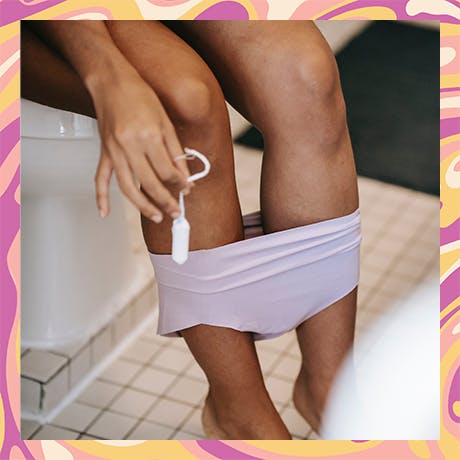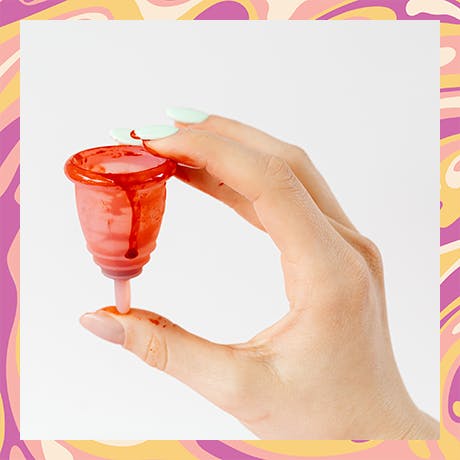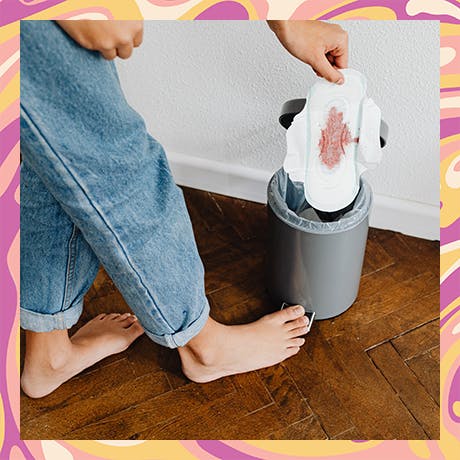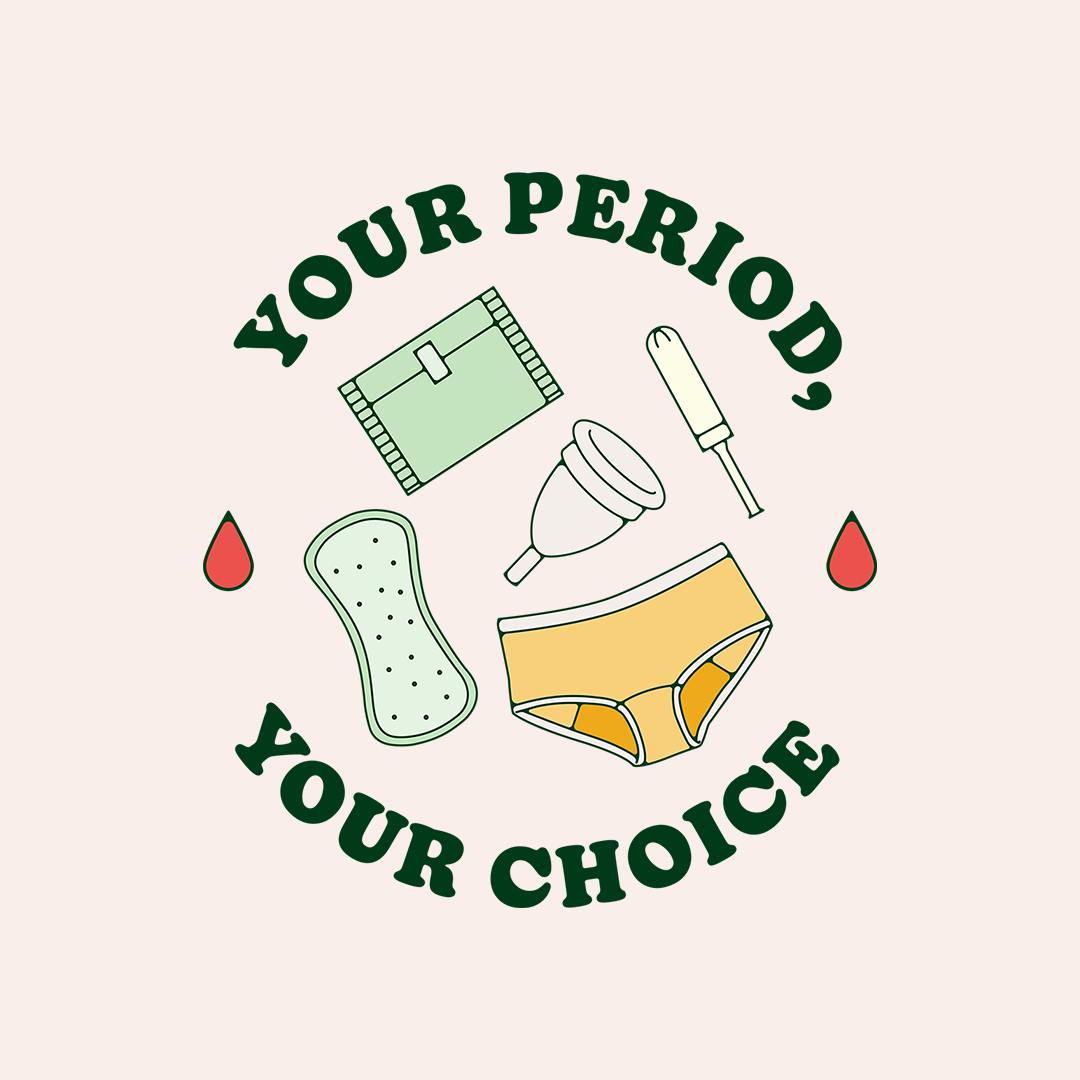Table of contents
1. Tampons
2. Q&A: Which of the following foods can help ease period cramps?
3. Pads
4. Q&A: How long can a standard pad (made with plastic) take to decompose?
5. The Mooncup
6. Q&A: What do blood clots typically look like?
7. Period pants
8. Q&A: On average, how much blood does a person typically lose during their period?
Written by Izzie Price
It’s the big question. Whether you regularly experience large clots or whether you typically get a light flow; whether you’re doubled over in pain, or (lucky you) able to run, skip and jump for the entirety of your period: choosing the right period care for you often involves trialling and testing many different options before you eventually land on the right one.
So we’ve put together a handy guide on popular forms of period care out there: to ensure you never have to waste any more minutes trawling the shelves (and ultimately coming away empty-handed) of your local pharmacy again.

Tampons
We’d be remiss if we didn’t include an option for our CBD tampons: if you’re not already familiar, they’re fully sustainable (check), organic (check again) and come with an optional CBD coating (check, check, check) to ensure that your period feels as good as it possibly can; not to mention the no-shed sleeve, which prevents the tampon fibre separating and building up in the vagina.
Ultimately, though, your tampons are your choice. If you’re going down the tampon route, just make sure to get a size that works best for you and your body — nobody wants to be attempting to insert an extra large size unnecessarily, or dealing with a tampon that didn’t manage to absorb all the clots!
Q&A: Which of the following foods can help ease period cramps?
A.) Bananas
B.) Milk
C.) Beans
Answer: A. Bananas are packed with magnesium, which is known for easing period cramps. But milk can bring on inflammation although the calcium in milk is a good way to control muscle spasms, so maybe consider milk in moderation) and beans, though healthy, can disturb your stomach during your period. Other great foods for easing period pain include oranges and broccoli.

Pads
Once again, it would be a little bizarre for us not to boast about our own pads — they’re biodegradable (fully composted in 192 days), created from corn-derived PLA (banishing fears of microplastics) and the absorbent sheets are crafted from 100% bamboo sheets: so they really are as absorbent as you could hope to find.
Again, though, pads are a personal choice. Whether you opt to go with wings or without wings, there are multiple variations of pads to choose from: and pads are a great option for anyone who suffers from vaginismus, or who simply doesn’t like inserting a tampon (or anything else) into the vagina.
Q&A: How long can a standard pad (made with plastic) take to decompose?
A.) 100-300 years
B.) 300-600 years
C.) 500-800 years
Answer: C. We know: that’s bad.

The Mooncup
It’s making waves (no pun intended) in the period world, and for good reason: @mooncupltd is a healthy, sustainable option for your period care. Crafted from silicone, plastic or rubber, it’s eco-friendly due to its reusability. Simply insert it into the vagina, and it’ll collect (rather than absorb) the blood from your period. Just be sure to empty it out regularly!
And if you’re looking for a way to clean your Mooncup regularly, you could opt for something like the @mypixiecup Cup Cup: simply place your menstrual cup inside this (slightly bigger) cup, fill it with water and put it in the microwave: and it’ll sterilise without you having to get saucepans involved.
Q&A: What do blood clots typically look like?
A.) Lumpy
B.) Stringy
C.) Jelly-like
Answer: all! These are all variations on how blood clots can appear — but if you’re ever concerned, it’s best to make an appointment with your GP, just in case.
Period pants
In a similar vein to the Mooncup, period pants are seriously environmentally friendly, thanks to their reusable nature. They’re also comfy, hygienic and — if you shop around — can be super stylish, too. Essentially, they’re leak-proof, hyper-absorbable knickers that you’ll barely even notice you’re wearing.
@glamouruk has put together a deep dive on the best period pants you can find in the UK: https://www.glamourmagazine.co.uk/gallery/best-period-pants — but while you’re here, we like the look of these:
Q&A: On average, how much blood does a person typically lose during their period?
A.) 100 millilitres
B.) 80 millilitres
C.) 60 millilitres
Answer: C. It’s not as much as you’d think!







